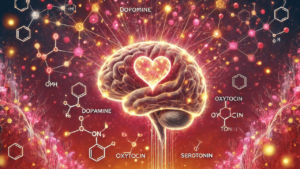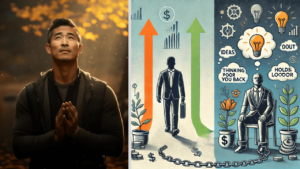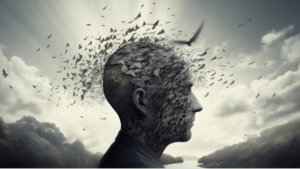Exploring the concept of symbiosexuality, a new phenomenon where individuals are romantically or sexually attracted to couples rather than individuals.

In the ever-evolving landscape of human relationships, a new form of attraction has emerged that challenges traditional notions of romantic and sexual desire. Known as symbiosexuality, this phenomenon describes a deep romantic or sexual attraction to the dynamic between people in a committed relationship rather than to the individuals themselves. This concept has sparked considerable interest and discussion online, with many exploring how it fits into the broader spectrum of human sexuality.
What Is Symbiosexuality?
Symbiosexuality is a term that has gained traction following a study conducted by researchers at Seattle University. The study, titled “Attraction to the Energy, Multidimensionality, and Power Shared Between People in Relationships,” was published in the Archives of Sexual Behavior. It explores the idea that some individuals are not merely attracted to a person, but to the relationship energy and synergy that exist between two people who are together.
Dr. Sally W. Johnston, the lead author of the study, suggests that this form of attraction prompts a reevaluation of how we think about romantic and sexual desire. Traditionally, these feelings are seen as directed toward a single individual. However, symbiosexuality introduces the idea that people can be drawn to the energy, complexity, and shared power of a couple’s relationship as a whole.
The Roots of Symbiosexuality
Dr. Johnston’s interest in symbiosexuality stems from her previous work on polyamorous relationships, particularly focusing on “unicorns.” In polyamory, a unicorn is a person who becomes romantically or sexually involved with a couple without being part of the primary relationship. These individuals often experience attraction to the couple as a unit, which laid the groundwork for Johnston’s exploration into symbiosexuality.
In these scenarios, the third party may be drawn to the relationship’s energy, yet they often face challenges. Johnston’s research indicates that unicorns are frequently objectified, excluded from the emotional depth of the relationship, and sometimes even mistreated, despite the apparent sexual benefits they may provide.

Insights from The Pleasure Study
Johnston’s research builds on a broader project known as The Pleasure Study, which examines various facets of human sexuality, including gender, sexual orientation, and relationship patterns. A key component of this study was a survey consisting of sixty-five questions that probed participants’ experiences and attractions, especially toward couples as a unit rather than as individual people.
Out of 373 respondents, approximately 145 reported experiencing symbiosexual attraction. Interestingly, a significant proportion of these participants identified as queer (over 90%) and polyamorous (87.5%), suggesting that symbiosexuality may be more common within non-traditional relationship structures. Additionally, the majority of respondents were white, middle-class, and held university degrees, indicating a possible cultural or educational influence on the prevalence of this attraction.
Johnston’s findings reveal that people who experience symbiosexual attraction are often extroverted and value closeness, affection, and consideration within relationships. They are also less prone to jealousy, which might explain their comfort with and attraction to the shared dynamics of a couple’s relationship.
The Appeal of Symbiosexuality
So, what is it about couples that draws some people in? According to Johnston, symbiosexual attraction involves an allure to the “energy, multidimensionality, and power” that a relationship embodies. This attraction goes beyond physical or emotional connection with one person, extending to the entire relational dynamic between two people.
For symbiosexuals, the relationship itself becomes an entity with its own unique energy, one that is rich with shared experiences, emotions, and a bond that transcends individual connections. This can be particularly appealing to those who find depth and complexity attractive, as well as to those who may be seeking something beyond the typical one-on-one romantic or sexual connection.
Understanding the Implications of Symbiosexuality
The concept of symbiosexuality challenges traditional views on relationships and attraction, opening up new possibilities for understanding how people connect with one another. It suggests that romantic and sexual attraction are not always linear or confined to two individuals but can be influenced by the intricate dynamics of a relationship.
This phenomenon also raises important questions about the future of relationships and how we define connection and desire. As more people explore non-traditional relationship structures, such as polyamory or open relationships, symbiosexuality might become an increasingly recognized form of attraction.
Final Thoughts
Symbiosexuality is a fascinating and complex phenomenon that highlights the diversity of human attraction. By focusing on the energy and dynamic between two people in a relationship, symbiosexuals experience a unique form of desire that challenges conventional ideas of love and sexuality. As research continues to explore this attraction, it could redefine how we understand relationships and the bonds that tie us together.
Read Next:

The Psychology of Love: Why Valentines Day Matters More Epic Than You Think
Discover the psychology of love and why Valentines Day is more important than you think. Learn how love impacts the brain, strengthens relationships, and boosts

Premier League Highlights: Arsenal Humiliate Man City 5-1, Spurs and Palace Secure Crucial Wins
Arsenal demolished Manchester City 5-1 in a statement premier league highlights win, reigniting their title hopes. Meanwhile, Crystal Palace stunned Man United 2-0, and Tottenham

How Budget 2025 Impacts the Indian Middle-Class: Major Tax Benefits and Glaring Omissions
Budget 2025 offers major tax relief to the middle class, including zero tax on incomes up to ₹12 lakh. However, it misses out on incentives

Degrees vs Employability: Why “Highly Qualified Degree Holders” Struggle to Find Jobs While “Less Qualified Individuals” Get Hired Faster!
Many highly qualified individuals struggle to secure jobs, while less qualified candidates get hired quickly. This Degrees vs Employability paradox is caused by employer preferences,

The Power of Mindset: Why Looking Poor Doesn’t Make You Poor, but Thinking Poor Does!
Discover why looking poor doesn’t define your wealth but thinking poor does. Learn the power of mindset and how a growth-oriented mindset can lead to

Overthinking: How It’s Damaging Today’s Youth – Causes and Cure in 2025
Understanding how overthinking is silently damaging today’s youth, from its causes rooted in societal pressure and social media to its long-term effects on mental health.
